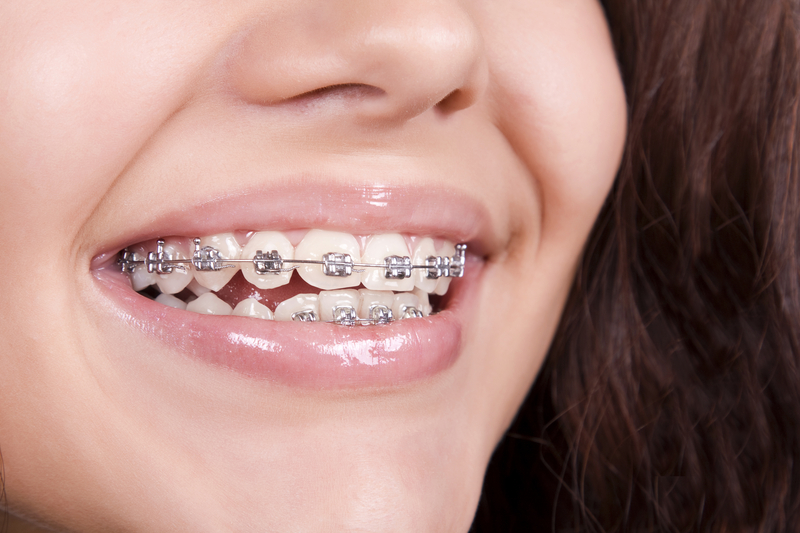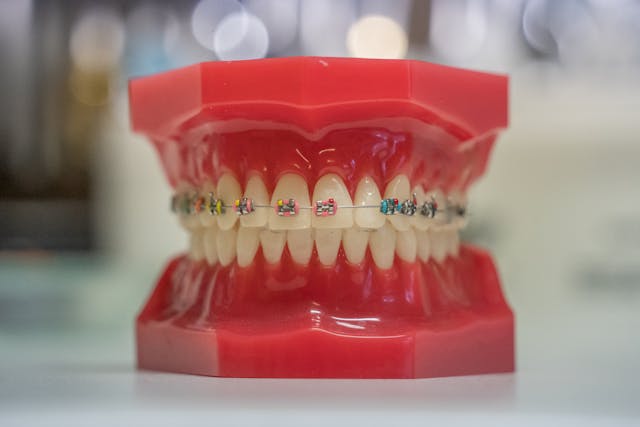A crooked grin is the most obvious clue that braces can be required, but parents should be aware of other warning signals. This article will go beyond the aesthetics of a crooked grin to discuss five braces warning indicators. Jaw discomfort and trouble breathing can indicate orthodontic disorders that need diagnosis and treatment. Parents can ensure their kid gets prompt orthodontic therapy for optimum dental health and well-being by detecting these warning signals early on.

1. Jaw Pain or Discomfort
Jaw pain or discomfort can be a significant indicator that braces can be necessary for dental alignment issues. If you experience persistent discomfort or pain in your jaw, it could signal underlying orthodontic issues that require attention. If you are living in New Jersey, seeking the expertise of an orthodontist in New Jersey is crucial for a thorough evaluation and diagnosis of any dental concerns causing jaw discomfort. An orthodontist in New Jersey possesses specialized knowledge and skills to identify and address orthodontic issues effectively. By consulting with an orthodontist, individuals can receive personalized treatment plans to alleviate jaw pain and achieve optimal dental alignment, promoting overall oral health and well-being.
2. Difficulty Breathing
Difficulty breathing, particularly through the nose, can be a warning sign of underlying orthodontic issues such as a narrow palate or obstructive sleep apnea. A narrow palate can restrict the airway, making it difficult for your child to breathe properly, especially during sleep. Similarly, malocclusion or misaligned teeth can contribute to breathing difficulties by affecting the position of the tongue and jaw, further obstructing the airway. If your child exhibits symptoms of difficulty breathing, such as mouth breathing or snoring, it’s essential to seek evaluation by an orthodontist. Orthodontic treatment, including braces or surgery, can be recommended to address the underlying issues and improve airflow.
3. Speech Impediments
Speech impediments, such as lisps or difficulty articulating certain sounds, can indicate underlying orthodontic issues affecting the alignment of the teeth and jaws. Malocclusion or misaligned teeth can interfere with proper tongue placement and airflow during speech, leading to speech difficulties. Additionally, issues with the alignment of the jaw or palate can affect the resonance and clarity of speech, further exacerbating speech impediments. If your child experiences persistent speech difficulties, it’s essential to consult an orthodontist for evaluation and intervention. Braces or other orthodontic appliances can be recommended to correct the underlying issues and improve speech clarity.
4. Chronic Headaches

Chronic headaches, particularly those localized around the temples or forehead, can be a symptom of underlying orthodontic issues such as malocclusion or TMJ disorders. Malocclusion refers to misalignment of the teeth and jaws, which can put a strain on the muscles of the head and neck, leading to tension headaches. Similarly, TMJ disorders can cause referred pain to the head and face, resulting in chronic headaches. If your child experiences frequent headaches, especially in conjunction with other orthodontic symptoms, it’s essential to seek evaluation by an orthodontist. Orthodontic treatment, such as braces or occlusal splints, can be recommended to alleviate symptoms and improve overall comfort.
5. Difficulty Chewing or Digestive Issues
Difficulty chewing or digestive issues, such as acid reflux or indigestion, can be indicative of underlying orthodontic issues affecting the alignment of the teeth and jaws. Malocclusion or misaligned teeth can disrupt the proper function of the bite, making it challenging for your child to chew food effectively. Additionally, issues with the alignment of the jaw or temporomandibular joint (TMJ) can lead to muscle strain and tension, further complicating the chewing process. If your child experiences persistent difficulty chewing or digestive issues, it’s essential to consult an orthodontist for evaluation and management. Braces or other orthodontic interventions can be necessary to correct the underlying issues and improve oral function.
Conclusion:
In conclusion, recognizing warning signs beyond a crooked smile is crucial for identifying underlying orthodontic issues that can require braces or other interventions. From jaw pain and difficulty breathing to speech impediments and chronic headaches, these signs can indicate malocclusion, TMJ disorders, or other orthodontic concerns. By seeking evaluation and treatment from an orthodontist, parents can address these issues early, promoting optimal oral health and overall well-being for their child. Prioritizing orthodontic care ensures that children can enjoy a healthy, functional smile and avoid potential long-term complications associated with untreated orthodontic issues.
